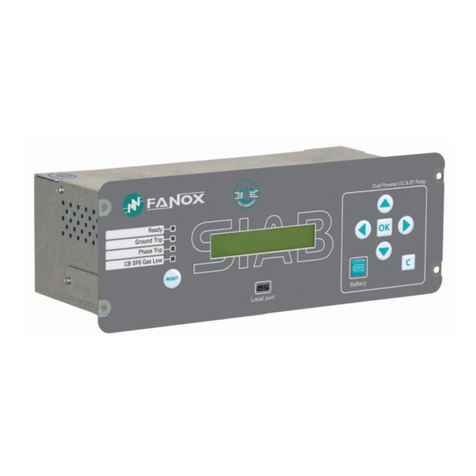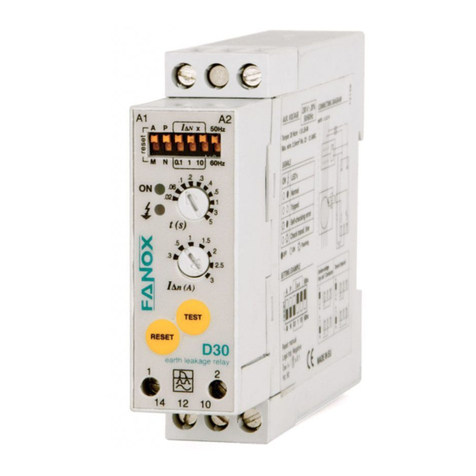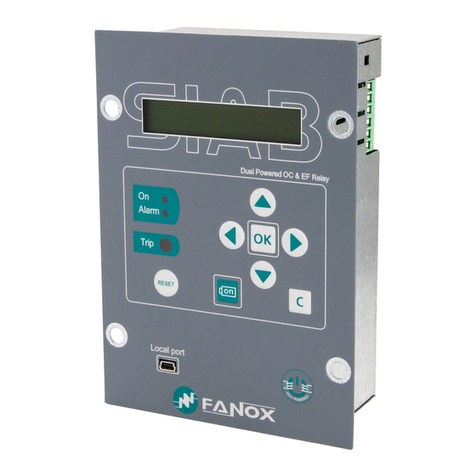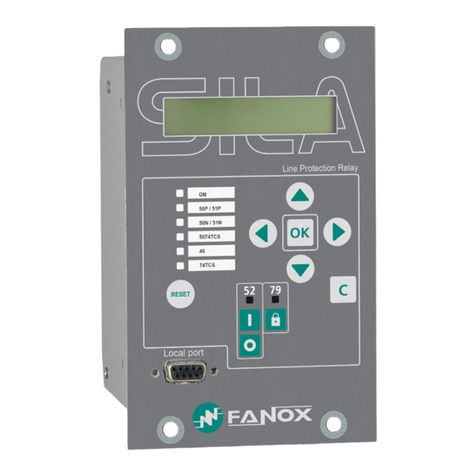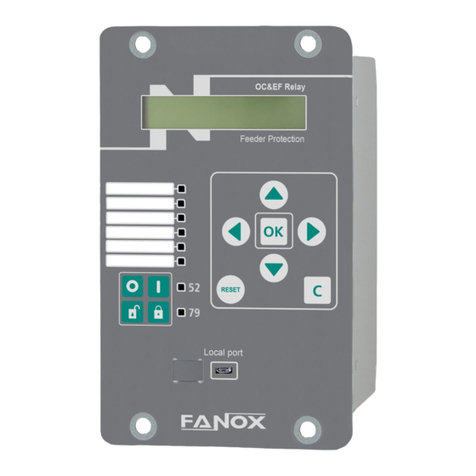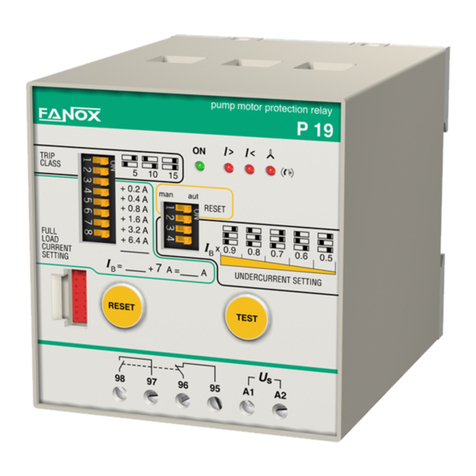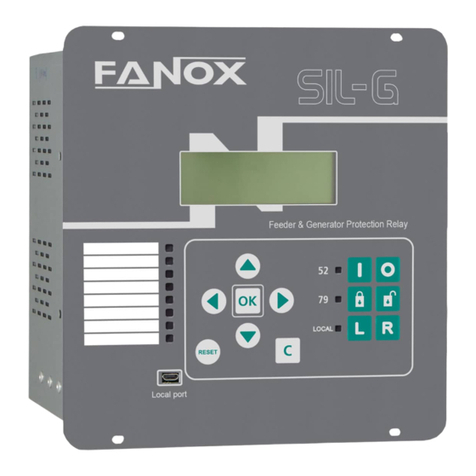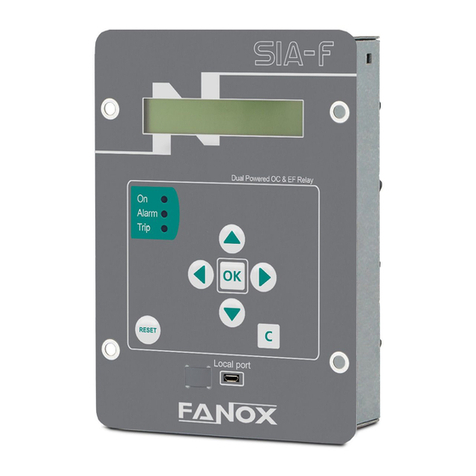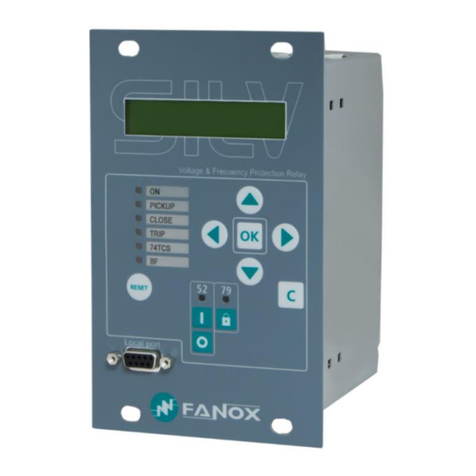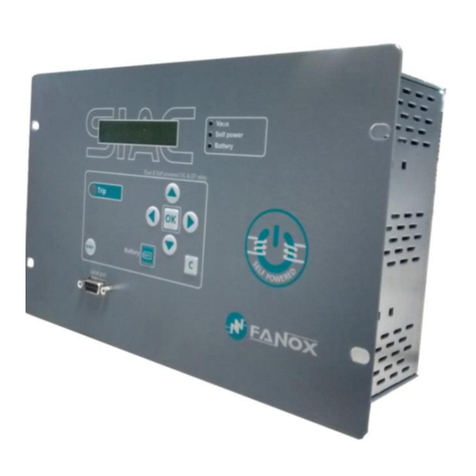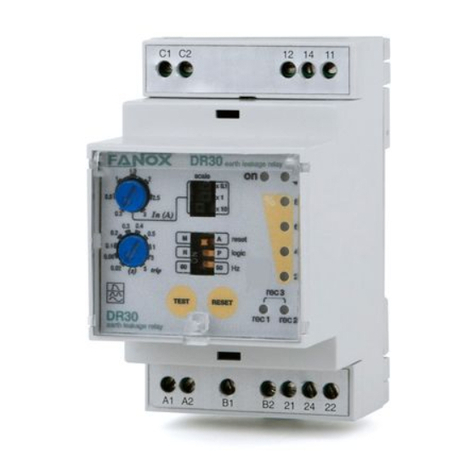
www.fanox.com Rev. 06 2/99
1. RECEPTION, HANDLING & INSTALLATION..................................................................................5
1.1. Unpacking.........................................................................................................................................5
1.2. Reception of relays..........................................................................................................................5
1.3. Handling electronic equipment......................................................................................................5
1.4. Installation, commissioning and service ......................................................................................6
1.5. Storage..............................................................................................................................................6
1.6. Recycling..........................................................................................................................................6
2. DIMENSIONS AND CONNECTION DIAGRAMS .............................................................................7
2.1. Frontal view......................................................................................................................................7
2.2. Case dimensions .............................................................................................................................8
2.3. Connection diagram........................................................................................................................9
2.4. Terminals..........................................................................................................................................10
3. DESCRIPTION ..................................................................................................................................11
3.1. Introduction......................................................................................................................................11
3.2. Equipment description....................................................................................................................11
3.3. Functional Diagram .........................................................................................................................13
3.4. Selection and ordering codes ........................................................................................................14
3.5. Specific CTs .....................................................................................................................................15
4. TEST WINDING.................................................................................................................................19
5. PROTECTION FUNCTIONS .............................................................................................................20
5.1. 50 Function. Definite time phase overcurrent ..............................................................................20
5.2. 50/51 Function. Inverse time phase overcurrent..........................................................................20
5.3. 50N Function. Definite time overcurrent .......................................................................................21
5.4. 50/51N Function. Inverse time neutral...........................................................................................22
5.5. Trip block protection for the switchgear.......................................................................................22
5.6. 49 Function. Thermal Image Protection ........................................................................................23
5.7. External trip......................................................................................................................................26
5.8. General Settings ..............................................................................................................................26
5.9. Settings Groups...............................................................................................................................27
5.10. IEC60255-151 Curves ......................................................................................................................27
5.11. ANSI-IEEE Curves............................................................................................................................32
6. MONITORING AND CONTROL........................................................................................................36
6.1. Measurements..................................................................................................................................36
6.2. States and Events............................................................................................................................36
6.3. Fault Reports....................................................................................................................................40
6.4. Date and Time by Real Time Clock (RTC) .....................................................................................40
6.5. Self-diagnosis ..................................................................................................................................41
6.6. Commands .......................................................................................................................................41
6.7. Test Menu.........................................................................................................................................42
6.8. Power supply....................................................................................................................................42
